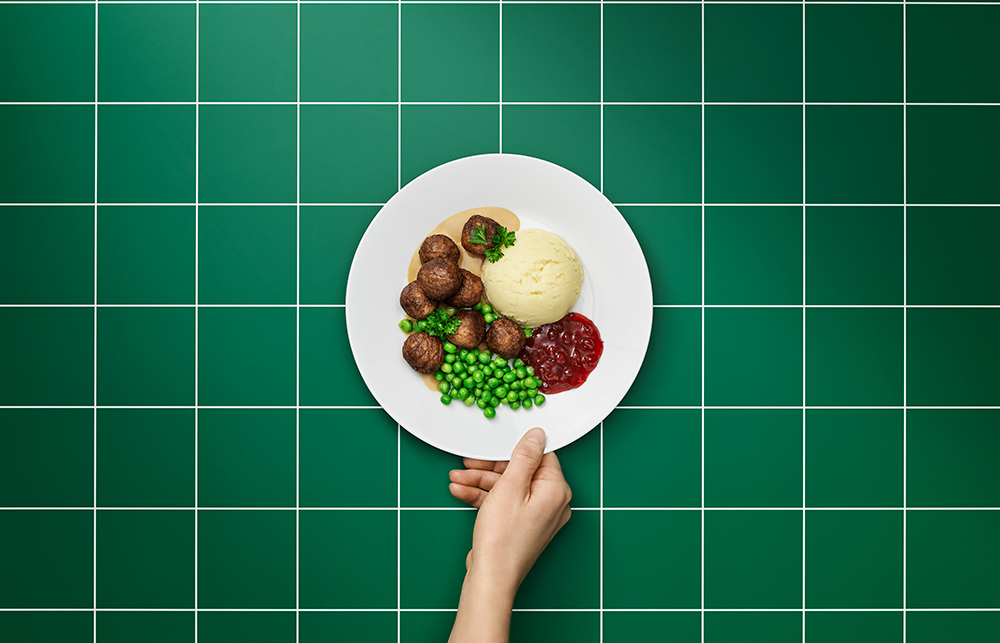宜家每年銷售約10億個經典肉丸。未來,這家瑞典家具巨頭希望推出更多的植物肉丸。
該公司在本月早些時宣布,新推出的植物丸子將于8月登陸歐洲,9月底在美國出售。
目前的宜家菜單上有兩個素食肉丸:一個是新的植物丸子,另一個是該公司在2015年推出的“素食丸子”。

宜家指出,這兩種產品是不同的,原來的素食丸子在外觀和味道上都有點像法拉費,可以看到玉米與胡椒粉,毫無疑問是蔬菜做的,它是為了讓素食者有更多的選擇。而新型植物丸子是由豌豆、燕麥、土豆、洋蔥和蘋果等制成的,其外觀和味道都更像肉丸。
宜家的食品供應經理克里斯塔?博伊爾說:“植物丸子真的是讓我們朝著愛吃肉的人邁出了一步,讓人們更加了解自己習慣吃什么。”
宜家推出肉丸替代品的決定是過去幾年植物產業發生變化的一個典型例子。為了增強素食的吸引力,公司試圖盡可能地復制肉類,由此也出現了一批新興的初創公司,如Beyond Meat和Impossible Foods。
正如《財富》雜志在2017年調研植物肉產業時所解釋的,“這里的目標并不是創造你的素食博卡漢堡,而是讓一位資深食肉者不會羞于將其帶到附近的燒烤店。”
這項戰略的底層邏輯是:要想有效減少溫室氣體的排放,企業必須吸引更多的素食人群。
宜家表示,這種植物肉丸的氣候足跡僅為傳統肉丸的4%。博伊爾稱,該公司的目標是到2022年,其食品銷售額的20%都來自植物性食品,“可持續發展是我們的首要任務。”
該公司決定允許其植物丸子與瑞典肉丸競爭,瑞典肉丸已經成為宜家的經典食品。此外,宜家還有其他三條產品線:Lack咖啡桌、Klippan沙發和畢利書柜。
宜家在20世紀50年代開始供應食品,當時宜家的創始人英格瓦?坎普拉德意識到與空腹的人做生意很困難。2015年,時任美國宜家食品負責人的格爾德?迪瓦爾德在接受《財富》雜志采訪時說:“肉丸是宜家出售沙發的最佳營銷方式,因為它能讓人們保持積極快樂。”(財富中文網)
編譯:于佳鑫
宜家每年銷售約10億個經典肉丸。未來,這家瑞典家具巨頭希望推出更多的植物肉丸。
該公司在本月早些時宣布,新推出的植物丸子將于8月登陸歐洲,9月底在美國出售。
目前的宜家菜單上有兩個素食肉丸:一個是新的植物丸子,另一個是該公司在2015年推出的“素食丸子”。
宜家指出,這兩種產品是不同的,原來的素食丸子在外觀和味道上都有點像法拉費,可以看到玉米與胡椒粉,毫無疑問是蔬菜做的,它是為了讓素食者有更多的選擇。而新型植物丸子是由豌豆、燕麥、土豆、洋蔥和蘋果等制成的,其外觀和味道都更像肉丸。
宜家的食品供應經理克里斯塔?博伊爾說:“植物丸子真的是讓我們朝著愛吃肉的人邁出了一步,讓人們更加了解自己習慣吃什么。”
宜家推出肉丸替代品的決定是過去幾年植物產業發生變化的一個典型例子。為了增強素食的吸引力,公司試圖盡可能地復制肉類,由此也出現了一批新興的初創公司,如Beyond Meat和Impossible Foods。
正如《財富》雜志在2017年調研植物肉產業時所解釋的,“這里的目標并不是創造你的素食博卡漢堡,而是讓一位資深食肉者不會羞于將其帶到附近的燒烤店。”
這項戰略的底層邏輯是:要想有效減少溫室氣體的排放,企業必須吸引更多的素食人群。
宜家表示,這種植物肉丸的氣候足跡僅為傳統肉丸的4%。博伊爾稱,該公司的目標是到2022年,其食品銷售額的20%都來自植物性食品,“可持續發展是我們的首要任務。”
該公司決定允許其植物丸子與瑞典肉丸競爭,瑞典肉丸已經成為宜家的經典食品。此外,宜家還有其他三條產品線:Lack咖啡桌、Klippan沙發和畢利書柜。
宜家在20世紀50年代開始供應食品,當時宜家的創始人英格瓦?坎普拉德意識到與空腹的人做生意很困難。2015年,時任美國宜家食品負責人的格爾德?迪瓦爾德在接受《財富》雜志采訪時說:“肉丸是宜家出售沙發的最佳營銷方式,因為它能讓人們保持積極快樂。”(財富中文網)
編譯:于佳鑫
Ikea sells some 1 billion of its iconic meatballs every year. But going forward, the Swedish furniture giant wants more of them to be made of plants.
The company announced earlier this month that it would roll out its “plant ball” in Europe in August and in the U.S. at the end of September.
Ikea will now have two vegan meatballs on the menu: the new plant ball, and a “veggie ball” that the company launched in 2015.
Lest you think Ikea is overdoing it with the plants, the company insists that the two products serve different purposes. The veggie ball—somewhat reminiscent of a falafel in both look and taste—is meant to target and give more options to vegetarians. With bits of corn and pepper visible, there’s no question that it’s made of vegetables. However, the new plant ball—made of pea protein, oats, potatoes, onion, and apple—is instead designed to look and taste like meat.
“The plant ball is really to take us a step toward people who love meat, making it a little more recognizable to what they’re used to eating,” says Krista Boyer, Ikea food range and supply manager.
Ikea’s decision to roll out the new meatball alternative is a prime example of the broader movement that’s taken place within the plant-based industry over the past few years. To broaden the appeal of vegetarian and vegan products, companies are increasingly attempting to replicate meat as closely as possible—an approach that has led to a burgeoning group of startups like Beyond Meat and Impossible Foods.
As Fortune explained in a deep dive into the plant-based meat industry in 2017, “the goal here is not to create your vegan cousin’s Boca Burger of yore, but instead a veggie patty that a hard-core carnivore wouldn’t be ashamed to bring to a neighborhood barbecue.”
The logic behind the strategy is that to have any true impact on reducing greenhouse gas emissions, companies must appeal to more than the subset of the population that has chosen a vegetarian or vegan lifestyle.
Ikea says the climate footprint of its new plant ball is only 4% of its classic meatball. If it converts about 20% of its meatball sales to plant balls, the company calculates that it would reduce its climate footprint in the food business by 8%. Boyer says the company’s goal is to have 20% of its food sales come from plant-based products by its fiscal 2022. “Sustainability is a top priority for us,” she says, noting that the move is part of the company’s broader mission to become climate positive by 2030.
The significance of the company’s decision to allow its plant balls to cannibalize its iconic Swedish meatball should not be understated. The Swedish meatball has become core to Ikea’s identity. Only three other product lines have been part of Ikea for as long: the Lack coffee table, the Klippan sofa, and the Billy bookcase.
Ikea started serving food in the 1950s when founder Ingvar Kamprad realized it was difficult to sell furniture to hungry customers. In 2015, Gerd Diewald, then head of U.S. Ikea food, told Fortune, “The meatball is the best sofa seller for Ikea because it keeps people engaged and happy.”






